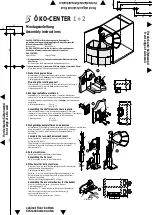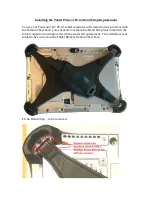
Stationary VRLA Batteries,
Installation and Operation Instructions
Page 13 of 16
w w w. b a e b a t t e r i e s u s a . c o m
R e v : 0 2 1 9
9.0 BATTERY MAINTENANCE
Proper maintenance will prolong the life of a battery and will aid in ensuring it is capable
of satisfying its performance requirements. A good battery maintenance program will
also serve as a valuable aid in determining the need for battery replacement.
9.1 CLEANING OF BATTERIES
Batteries should be kept clean and dry at all times. Cell containers and cell covers are
made of plastic materials and should be cleaned with water. No solvents or detergents
should be used. Use caution to avoid electrostatic discharges.
In certain circumstances, specific cleaners may be used. However, you must consult
with BAE USA or your local representative prior to use. If approved, after application of
the cleaner the cell should be rinsed with water and thoroughly dried with a clean damp
cloth.
10.0 PERIODIC INSPECTIONS
The inspections described below should be performed and will serve as a means of
checking the reliability of the battery system. The periodic inspections listed below are
the minimum required. For additional guidance on recommended battery maintenance,
reference IEEE 1188.
To be measured and recorded Quarterly:
•
Battery System Voltage & Current (Section 10.1)
•
Visual inspections:
o
General Appearance & Cleanliness
o
Visible Cell damage
•
Charger output and voltage
•
Ambient temperature and condition of ventilation equipment
•
Monitoring equipment operation if installed.
To be measured and recorded every 6 months:
•
Quarterly Inspections & Measurements, plus the following
o
Pilot individual cell/bloc
k
voltages (Section 10.2)
o
Pilot cell temperatures (Section 10.3)
o
Float current (Section 10.4)
o
Individual cell/block internal resistance readings – either with a manual meter or
via connected monitoring equipment
To be measured and recorded every 12 months (Annually):
•
Quarterly Inspections & Measurements, plus the following:
o
Individual cell/block voltages (Section 10.2)
o
Individual cell/block temperatures of all cells/blocks (Section 10.3)
o
Float current (Section 10.4)
o
Connection resistance readings (Section 10.5)
o
Individual cell/block internal resistance readings – either with a manual meter or
via connected monitoring equipment
o
Rack condition and integrity



































